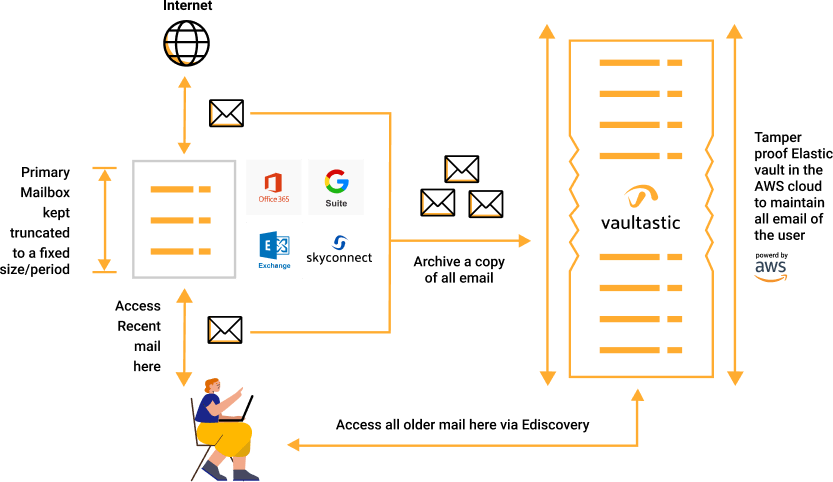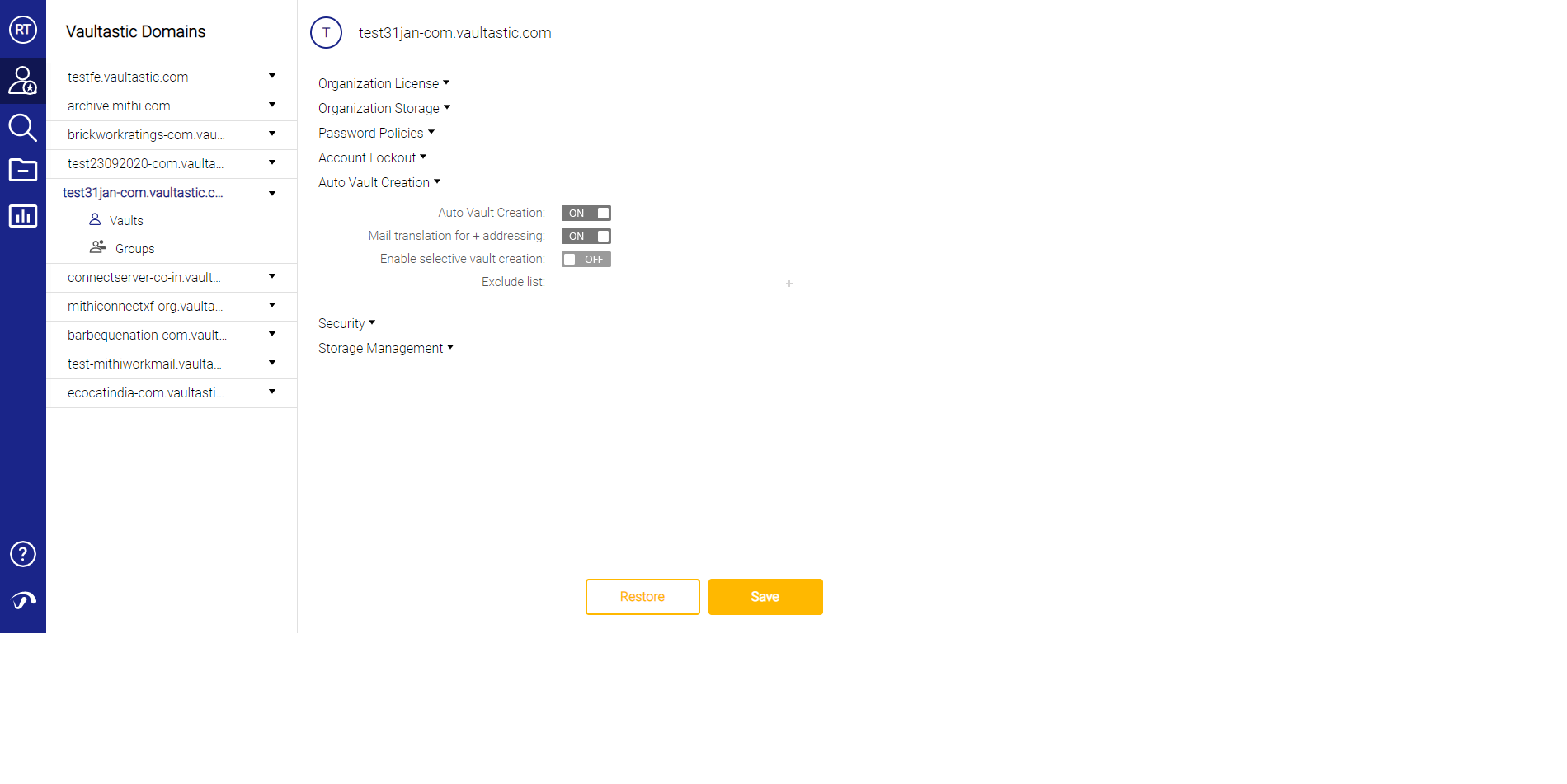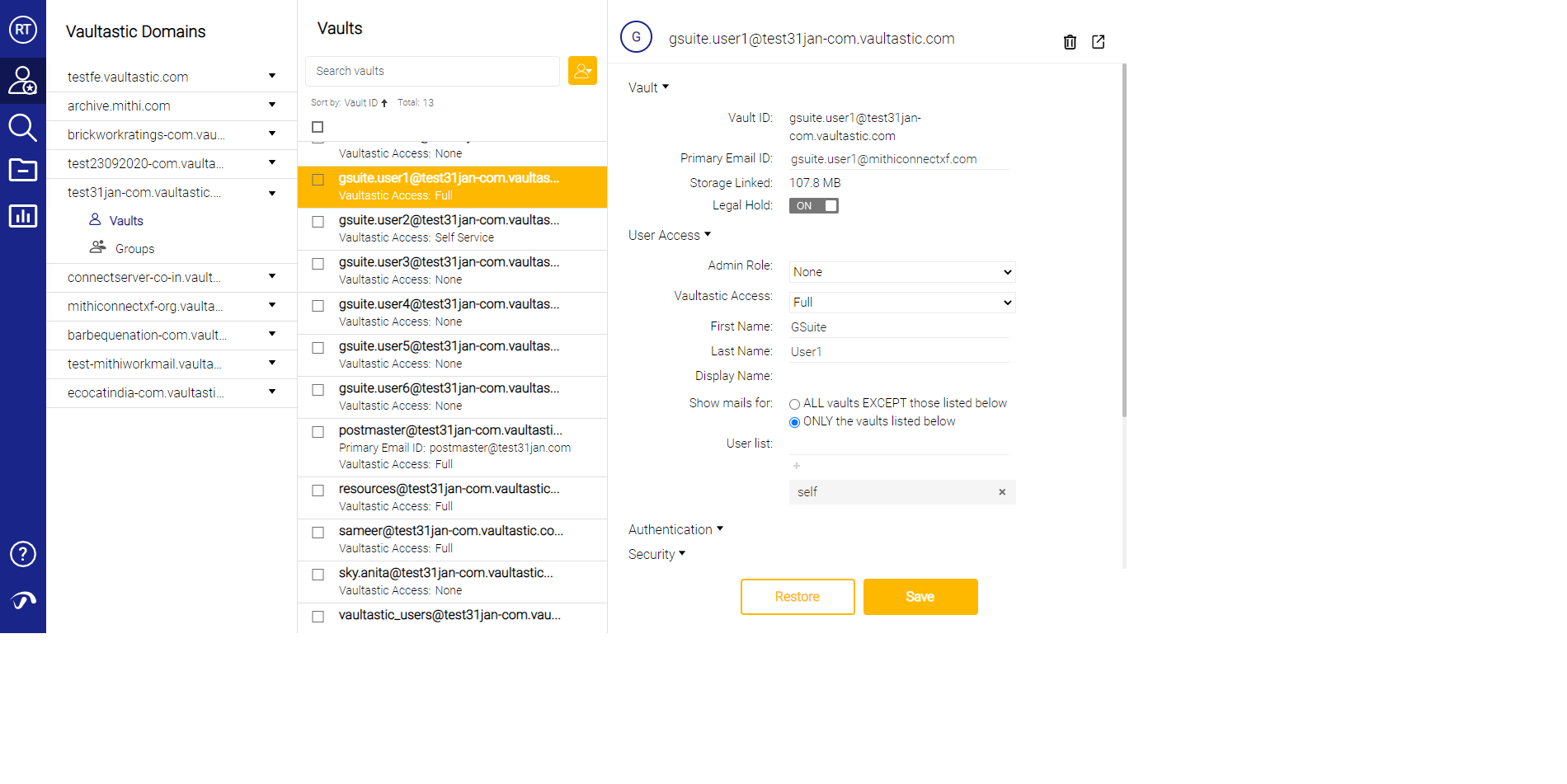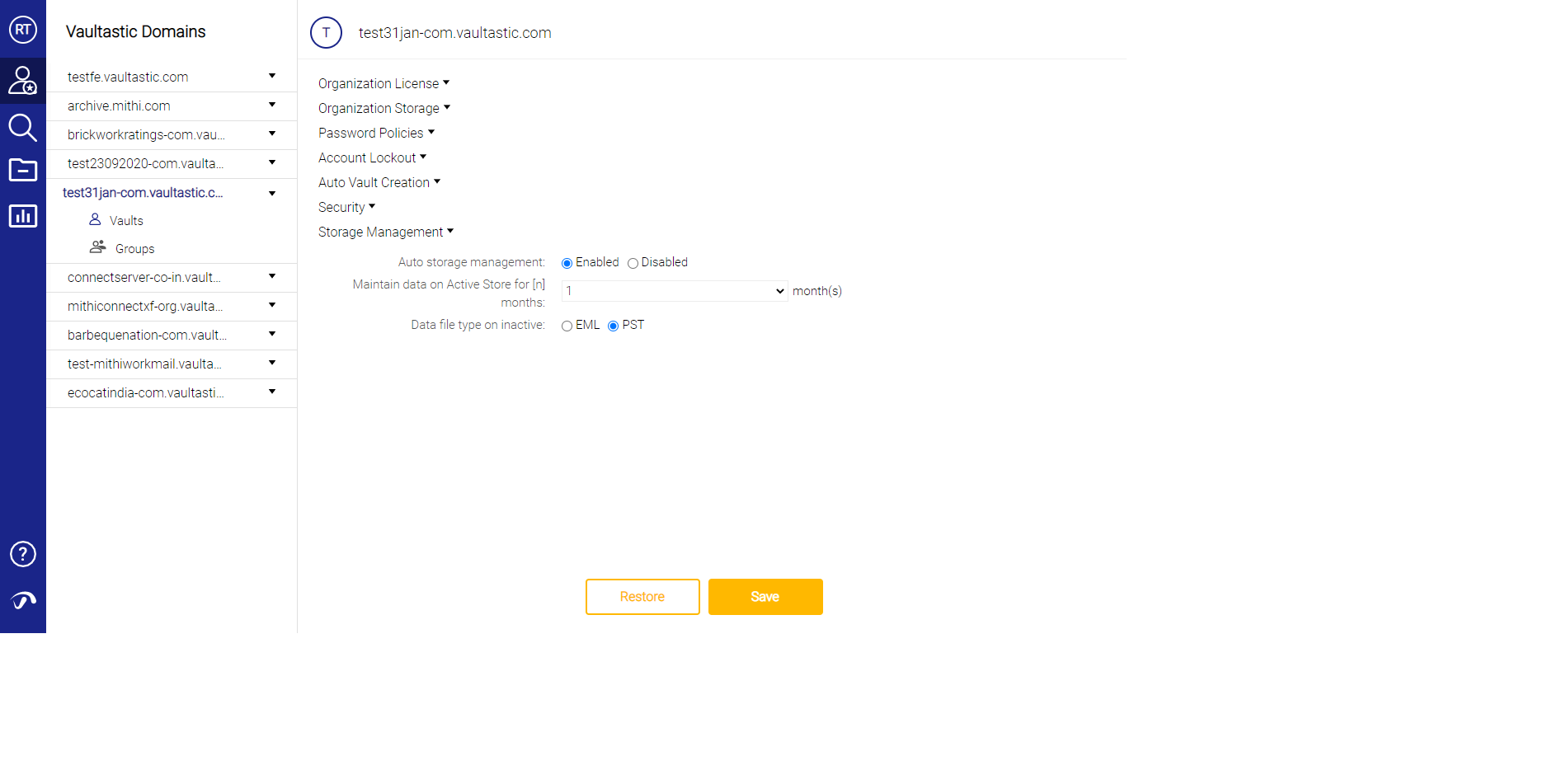Note: The Vaultastic Inactive Store will henceforth be called the Vaultastic Open Store. During the transition, you will find references for both names within the documentation and other communications.
Why are growing mailboxes so challenging for IT teams?
Growing mailboxes can be risky, costly, and unwieldy besides also slowing down the mail service performance:
Growing mailboxes may overload the email apps and slow down their performance, leading to performance degradation.
Mailboxes approaching their maximum limits need more resources, either as expensive plan upgrades or the purchase of additional storage.
To keep within the mailbox limits, users/admins typically download and delete data to create space in the mailboxes, increasing risks for the organization in maintaining a complete record of information exchanged over email.
The lack of a centralized store makes it challenging to locate old emails when required as a reference or evidence during an audit, investigation, or litigation.
How can the storage tiering enable long-term data retention with Vaultastic?
Organizations can use Vaultastic to store older emails and reduce the active mailbox sizes on their primary mail solutions

There are two ways you can do this:
Automation
In this method, the emails transacted by users are journaled or forwarded to Vaultastic, and a retention policy on the primary mail server automatically deletes emails older than a specific duration (e.g., six months)
On-demand
In this method, when a user's mailbox is approaching the limit (defined threshold), older mails are copied to Vaultastic and then deleted from the mailbox.
In both cases, recent emails for a mailbox are available on the primary mail solution, and all older emails are present on Vaultastic.
This in-effect is storage tiering, which can help long-term data retention at 60% lower costs.
Storage tiering using the Automation method:
Step 1: Enable automatic capture of all emails on Vaultastic
- Provision vaults or enable auto vault creation on the Active Store

- Configure journaling/forwarding on the primary mail server for selected users. Once configured, your primary mail solution will copy mail transacted on the email servers to the Active Store of your Vaultastic domain

- For further cost compression on Vaultastic, configure auto storage movement from Active to Open Store

Step 2: Deploy automatic retention on the primary mail server
Define mail retention policies to delete mail older than a specific duration automatically from the mailboxes of the selected users.
Each mail solution will have its ways of deploying an automatic retention policy. Please consult your mail system administrator to get this done.
Storage tiering using the on-demand process
Step 1: Backup old data from the mailboxes to Vaultastic
To back up data on the Active Store
If you wanted the mailbox data always to be search ready, you would do this. Suitable for use-cases needing frequent access.
To back up data on the Open Store
You would park data on the Open (inactive/cold) store if you needed to access the data infrequently (a few times a year). Accessing information from this store will take longer but will save a lot on storage costs.
Step 2: Delete old email from the primary mail server
Delete emails copied to Vaultastic in step 1 from the mailbox. Each mail solution will have its way of deleting selected emails from the vaults. Please consult your mail system administrator to get this done.
How will end-users access their older mail?
If the emails required by the user are already on the Active Store, provide Self Service access to the user's vault.
Adjust the security settings to give only the required controls.
Once the user completes the work, remove the access.
If the older emails have been parked in the Open Store, then the following options are available:
Option 1
- Create a temporary vault on the Active Store and copy the required data from the Open Store to the newly created vault on the Active Store. This action will automatically index the emails and make them discover ready.
- Give self-service access to the end-user.
- Adjust the security settings as required.
- Remove access and vault are the user's work is done.
Option 2
- Download the required data file(s)] from the Open Store and share it with the end-user
Option 3
- Download and share metadata associated with those data files with the end-user.
- Ask the user to confirm that the mail she is looking for is available in the data file. Upon receiving confirmation, either extract the required mail using LegacyFlo or download the data file using the Open Store App.


